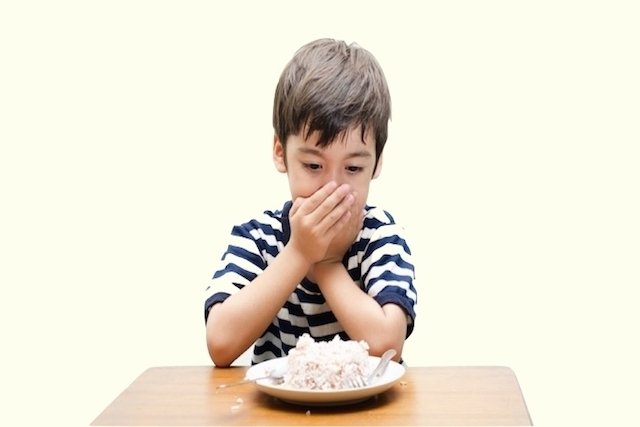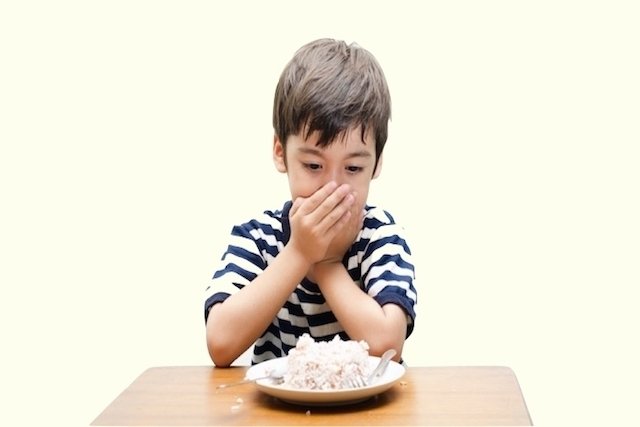Sometimes children over 1 or 2 years of age, despite being able to eat almost any type of food, seem to be too lazy to chew and refuse to eat more solid foods such as rice, beans, meat, bread or potatoes.
To solve this problem, it is important to create strategies to make the child want to chew food, such as leaving small solid pieces in the baby food or kneading only half the food, in addition to being very patient at meal time.
Having this type of problem with your children’s nutrition is not rare, and it usually happens because the child went through a difficult period in early childhood, such as choking frequently or having illnesses that made eating difficult, making the parents resorted to milk or porridge very frequently, not allowing adequate chewing stimulation.

Below we present 5 good strategies to try at home and encourage your child to eat solid foods:
1. Start with foods your child likes
Starting with foods that the child likes is an important strategy to facilitate acceptance of solid meals. So, if your child loves mashed bananas, for example, you should try offering half of a whole banana and letting them hold the food themselves to feel its texture and smell. In some cases, repeating this strategy for a few days is enough for the child to start taking food to their mouth spontaneously.
2. Leaving small pieces in the baby food
Leaving small pieces in the baby food is another way to make the child feel solid food little by little, without forcing him to eat all the food in solid form at once.
You can also use the strategy of kneading only half of the baby food, leaving the other half made up of whole foods, and trying to alternate the texture of each food between spoonfuls.

3. Create rewards to encourage
Creating small rewards encourages the child to progress in eating, making it possible to use incentives such as clapping and smiling with each spoonful they manage to chew, or allowing the child to get out of their seat to sit at the table with other family members, which It will make her feel important and mature.
4. Letting the child pick up the food
Letting your child pick up their food and giving them a spoon to hold, even if they make a mess, is a way of encouraging them to feed themselves and giving them a feeling of power over food. This is a good strategy especially when there is another adult eating next to them, as the child tends to imitate the actions of their family members, including the gestures of taking food to their mouth and chewing themselves.
Furthermore, letting the child participate in meal preparation also increases their intimacy with food and makes them more likely to try the food they helped produce.

5. Restart the food introduction process
Even if the child is over two years old, starting the entire food introduction process over again may be the most effective way to get him to eat solid foods. To start over, you should try to start with just fruit purees or shaved fruit for snacks, leaving milk, porridge and pureed soup as your little one’s main meals.
As the child accepts to consume fruit porridge, one should try to introduce fruit in small pieces and savory porridge, using purees, mashed eggs and ground meat, for example, always remembering to never force or threaten the child during the meal. .
Check out these and other tips in the following video:
Consequences for the child’s development
Children who do not chew solid food, and only eat purees, baby food, porridge and liquid or creamy soups, can develop problems such as speech delay and difficulty reproducing sounds correctly, due to the lack of chewing and stimulation of the facial muscles. . As a result of speaking little or poorly, the child may feel inferior or excluded when they start to socialize with other children at school, for example.
These children need monitoring by a pediatrician and nutritionist so that they do not lack nutrients in their diet, compromising their immunity and so that there is no deficit in their growth and intellectual development.
Little by little she will get used to it and within a few months it may be possible to notice a good difference in her diet and also in her growth and development.

Sign up for our newsletter and stay up to date with exclusive news
that can transform your routine!
Warning: Undefined array key "title" in /home/storelat/public_html/wp-content/plugins/link-whisper-premium/templates/frontend/related-posts.php on line 12
Warning: Undefined array key "title_tag" in /home/storelat/public_html/wp-content/plugins/link-whisper-premium/templates/frontend/related-posts.php on line 13




